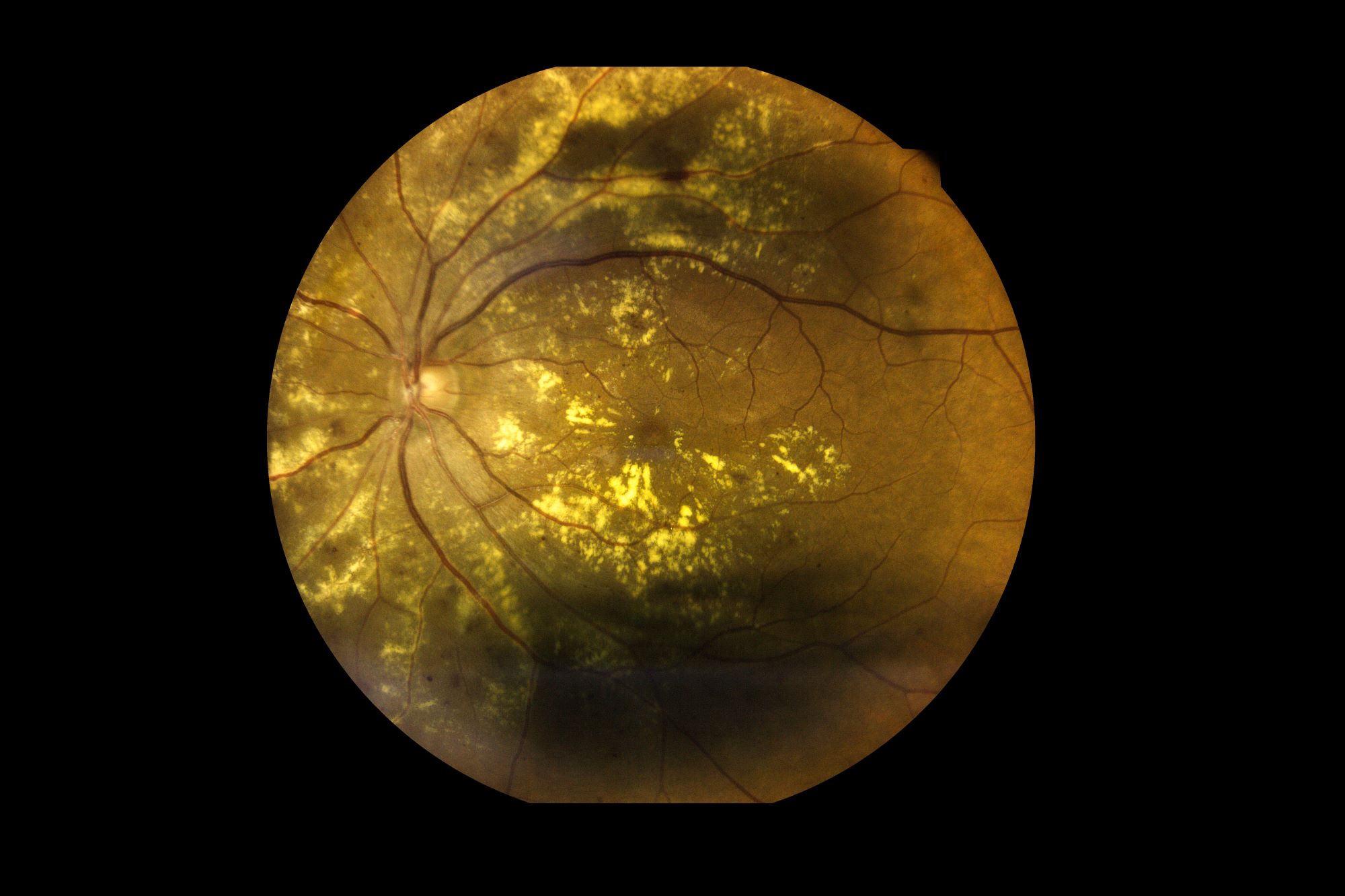What
The team from NIH and Johns Hopkins University, Baltimore, reported the details of how alterations in a factor called AKT2 affect the function of lysosome organelles, and results in the production of drusen deposits in the retina, which is a hallmark sign of dry age-related macular degeneration. The researchers suggest that the findings of drusen formation are a downstream effect of AKT2-related lysosome dysfunction and could point to a new target for therapeutic intervention.
Lysosomes are like cells’ garbage disposals, playing an important role in maintaining the eye’s light-sensing retina. Cells that make up the retinal pigment epithelium (RPE) provide oxygen and nutrients to the retina’s energetically active neurons, as well as collecting and processing waste products through lysosomes. Failure to process these waste products leads to the formation of drusen, and as AMD progresses, drusen increases in number and volume. Despite intensive research, drusen formation is still largely a mystery.
The study
For this study, Kapil Bharti, Ph.D., and Ruchi Sharma, PhD., co-head the Ocular Stem Cell & Translational Research (OSCTR) Section within NIH’s National Eye Institute Intramural Research Program and associates manipulated AKT2 expression levels in RPE in mice. When they overexpressed AKT2, lysosomes lost normal function and the mice developed dry AMD symptoms such as RPE degeneration.
Similar features were observed in RPE cells from human donors with AMD or in RPE cells generated from patient stem cells. Cells from donors who possessed a gene variant called CFH Y402H, which increases AMD risk, had relatively greater expression of AKT2 and showed functionally defective lysosomes, as well as formed drusen deposits.
Offers hope
According to the researchers, the findings from this study could form the basis for a possible future treatment for dry AMD, for which no therapy currently exists. AMD is one of the most common causes of vision loss in the United States. Those with dry AMD develop drusen in an area of the light-sensing retina called the macula that people use for sharp, central vision.
It was noted that the study builds upon previous work published by Ruchi Sharma, Ph.D., also of the NEI Section on Ocular Stem Cell and Translational Research Section, who developed the AMD patient stem cell-derived RPE model (Sharma et al., 2021).
As with anything you read on the internet, this article should not be construed as medical advice; please talk to your doctor or primary care provider before changing your wellness routine. WHN does not agree or disagree with any of the materials posted. This article is not intended to provide a medical diagnosis, recommendation, treatment, or endorsement. Additionally, it is not intended to malign any religion, ethnic group, club, organization, company, individual, or anyone or anything. These statements have not been evaluated by the Food and Drug Administration.
Content may be edited for style and length.
References/Sources/Materials provided by




